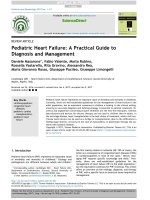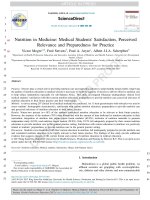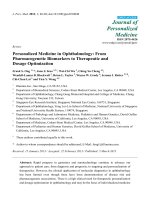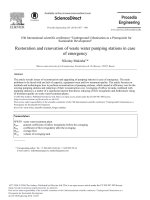Pediatric emergency medicine trisk 3683 3683
Bạn đang xem bản rút gọn của tài liệu. Xem và tải ngay bản đầy đủ của tài liệu tại đây (132.84 KB, 1 trang )
important that sutures not grasp deep tissue within the eyelid because this may
result in cicatricial eversion of the eyelid margins. Table 114.3 summarizes those
findings that, when associated with eyelid lacerations, should prompt
ophthalmology consultation for wound closure. CT scan should be considered in
all cases of full-thickness perforation of the upper lid because of the possibility of
intracranial involvement or occult foreign bodies within the orbital space.
Pneumocephalus should prompt neurosurgical evaluation. A perforating
implement can reach the orbital apex and optic nerve. Thus, evaluation of visual
acuity, relative afferent pupillary defects, and confrontation visual fields can
detect signs associated with optic nerve injury in relatively innocuous appearing
lacerations.
CORNEAL AND CONJUNCTIVAL INJURY
CLINICAL PEARLS AND PITFALLS
Topical anesthetics will only improve pain if the pathology is corneal or
conjunctival, and therefore are diagnostically useful.
If fluorescein staining shows one or more vertical linear abrasions,
consider the presence of a foreign body.
An ophthalmologist should evaluate larger corneal abrasions and those
involving the pupillary axis within 24 hours of injury.
If a teardrop or irregular pupil is seen, the abrasion may represent
penetration into the deeper corneal tissues (open-globe injury) and
emergent ophthalmology consultation is indicated.
Corneal abrasions should heal within 48 hours; nonhealing and/or
persistently painful abrasions should prompt ophthalmology
consultation.
Current Evidence
Literature has established that the use of a patch with simple corneal abrasions
does not improve healing or pain control and is therefore generally not
recommended. Topical antibiotic ointments are frequently prescribed although
there is limited data that this practice improves outcome.
Goals of Treatment
The goals of ED treatment of corneal and conjunctival abrasions are as follows:
(1) Rule out the presence of more severe ocular injury, (2) control pain, and (3)









